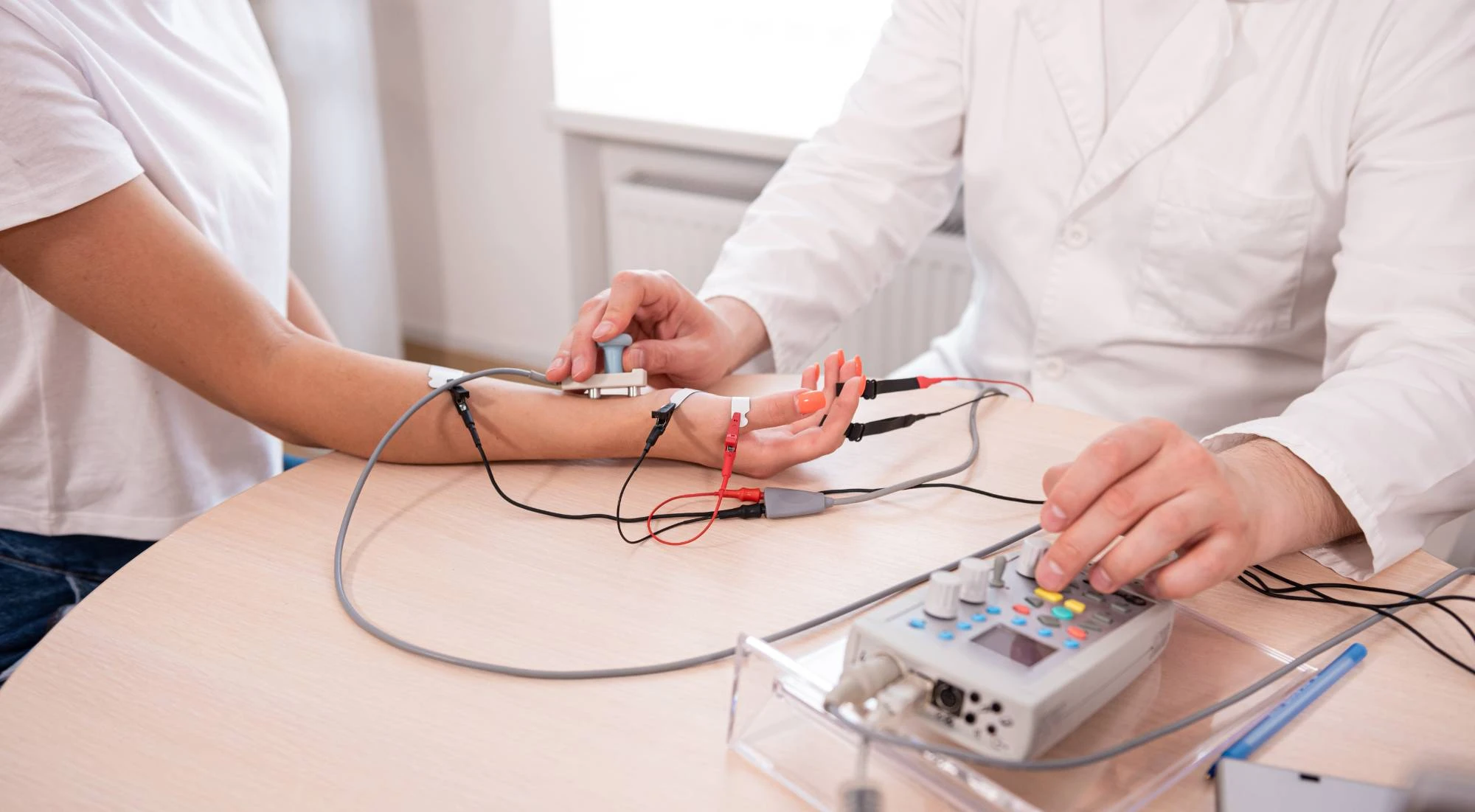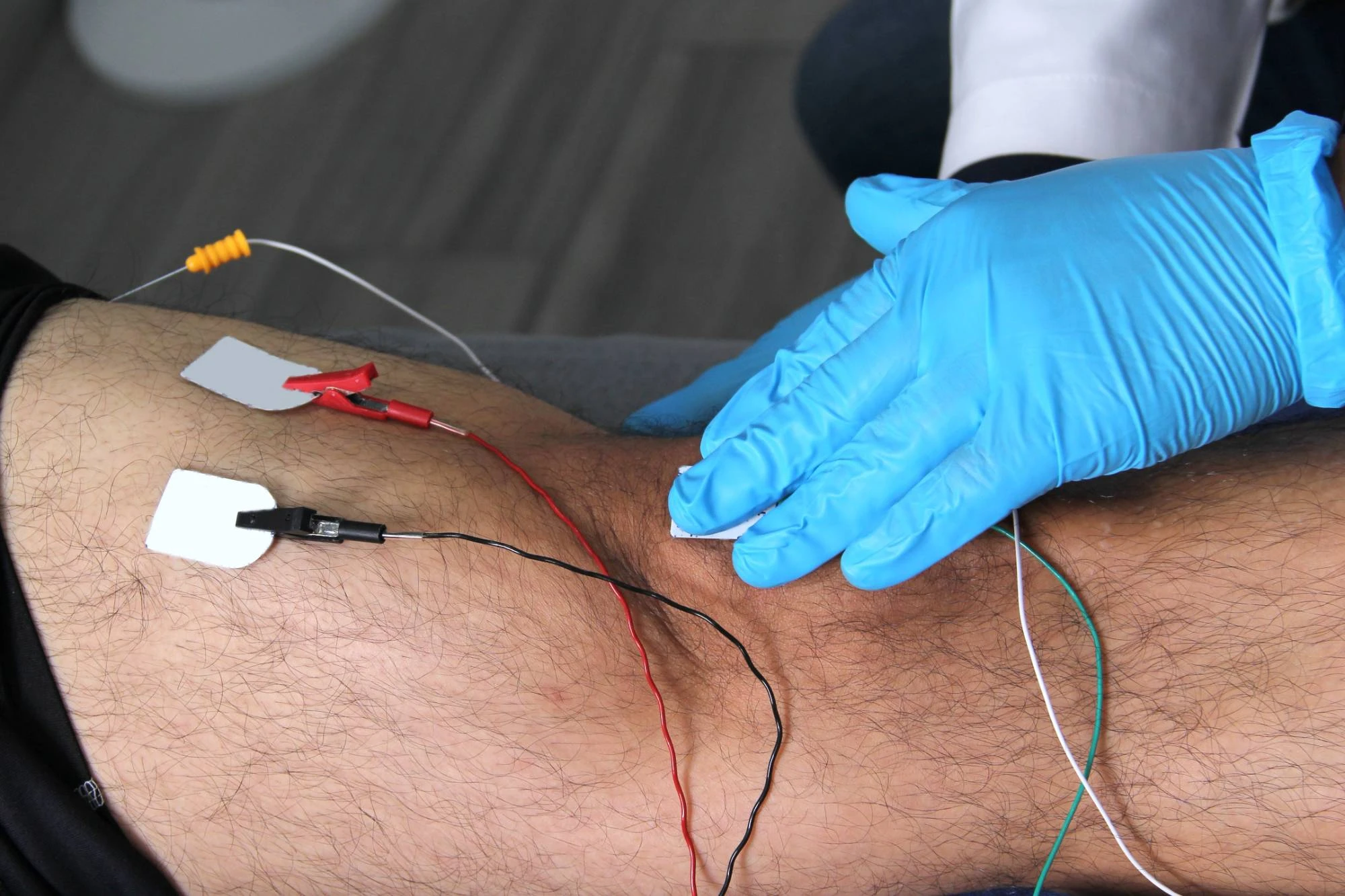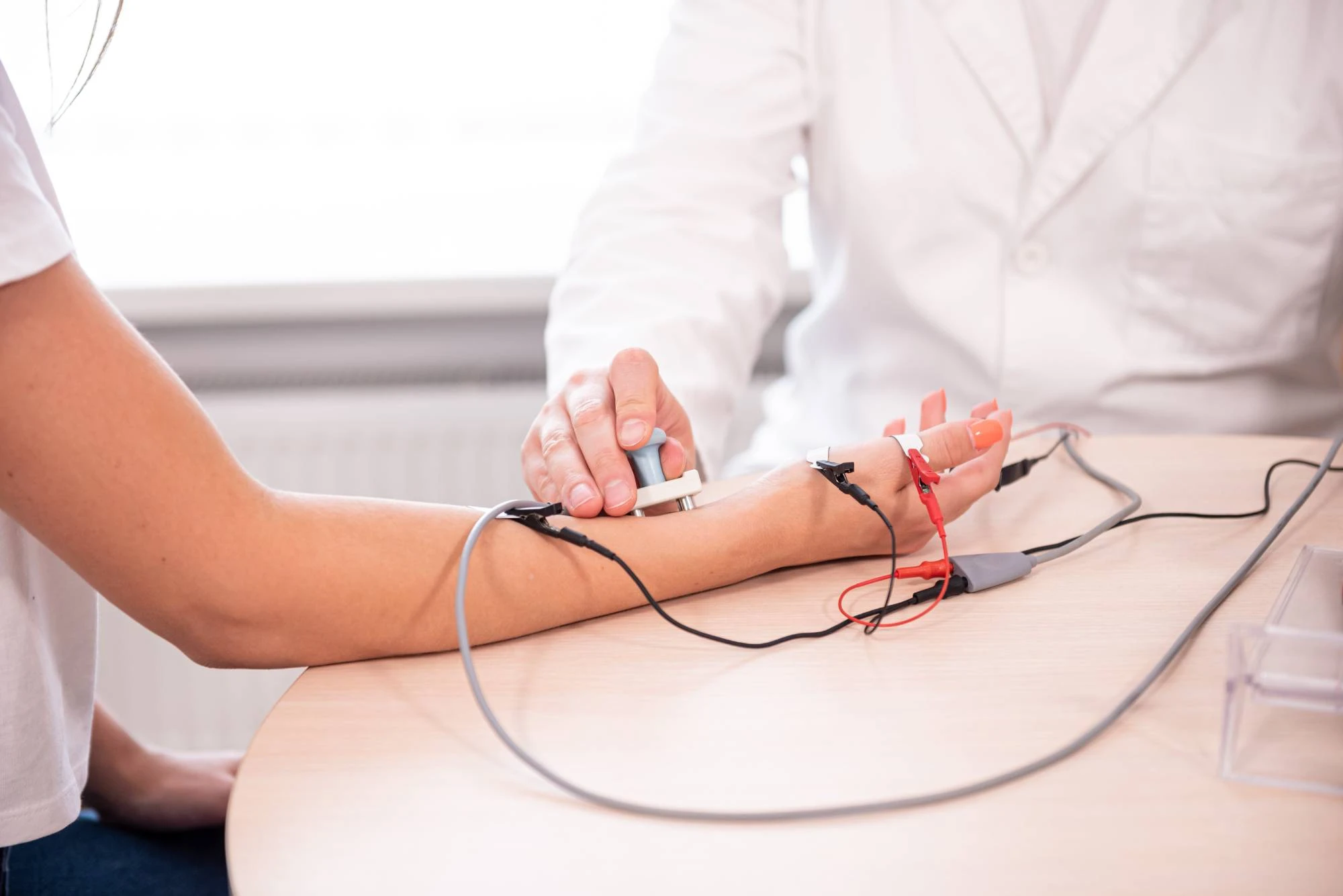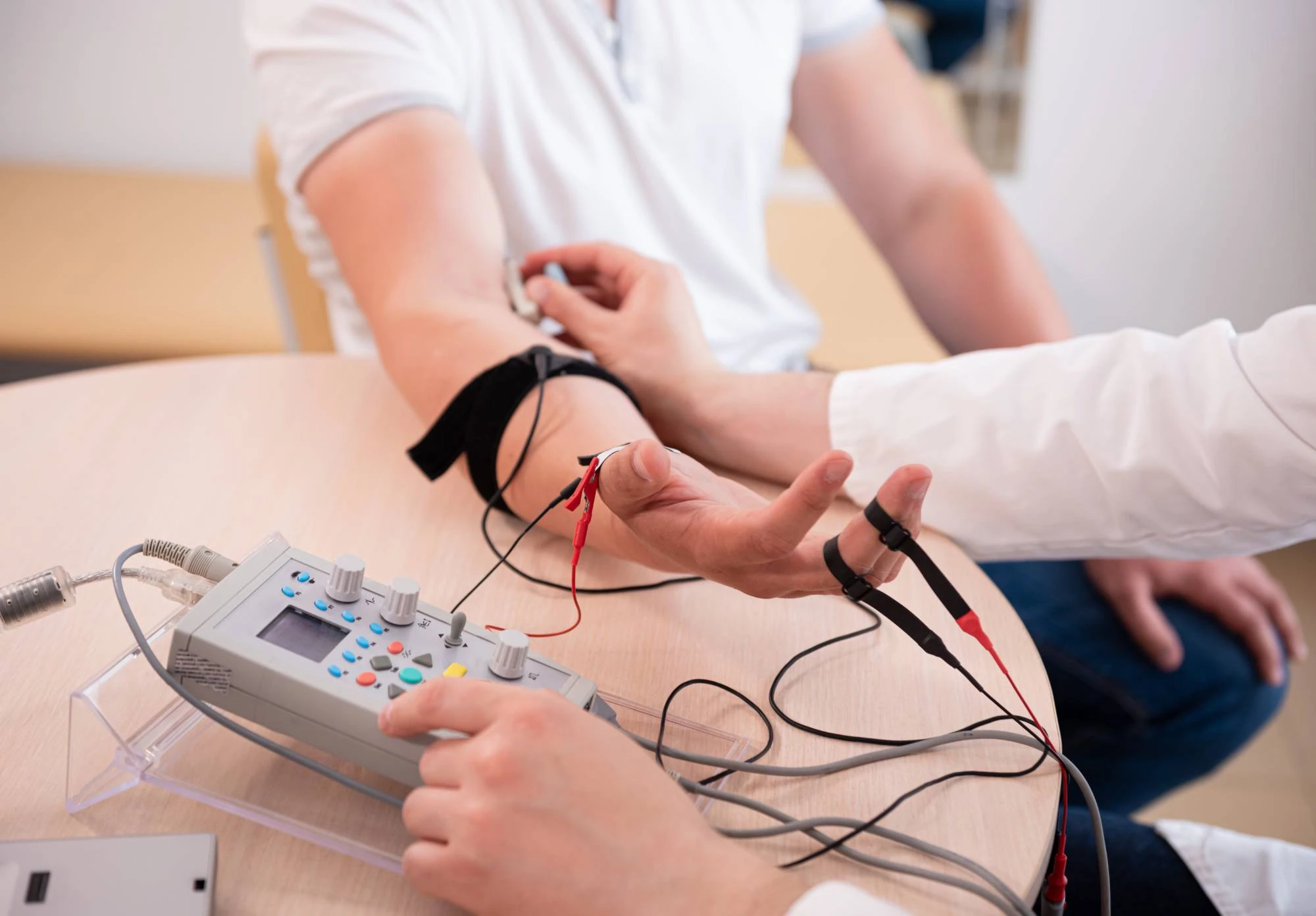Advanced electromyography testing that pinpoints nerve and muscle problems so you can move forward with the right treatment.

Reviews

You’ve been dealing with numbness, tingling, weakness, or pain for weeks or months. Your primary care doctor suspects a nerve or muscle problem, but you need definitive answers. EMG testing gives you those answers.
This diagnostic procedure measures the electrical activity in your muscles and nerves. It shows us exactly where problems exist and how severe they are. No more guessing about what’s wrong or trying treatments that might not work.
When we complete your EMG and nerve conduction study, you’ll know whether you’re dealing with nerve compression, muscle disease, or another condition. That clarity means you can start the right treatment immediately instead of continuing to wonder what’s happening in your body.
We’ve been serving Ocean View Heights and surrounding Florida communities for years. Our physicians are board-certified in electrodiagnostic medicine, which means they’ve completed specialized training beyond medical school specifically in EMG and nerve conduction testing.
We’ve performed thousands of these diagnostic tests. That experience matters when you need accurate interpretation of your results. We know what normal looks like, and we recognize the subtle patterns that indicate specific conditions.
You’re not just getting a test here. You’re getting expertise that ensures your results are read correctly the first time, so your treatment plan starts on solid ground.

Your EMG testing appointment typically takes 30 to 60 minutes, depending on which muscles and nerves we need to evaluate. We start with nerve conduction studies, where small electrical pulses test how well your nerves transmit signals. You’ll feel brief, mild shocks, but nothing painful.
Next comes the electromyography portion. We insert very thin needle electrodes into specific muscles to measure their electrical activity. The needles are much thinner than those used for blood draws. You might feel brief discomfort when they’re inserted, but most patients tolerate this well.
Throughout the test, we explain what we’re seeing and what it means. When we’re finished, we review the results with you immediately in most cases. You’ll understand exactly what we found and what it means for your next steps. We also send a detailed report to your referring physician so your care team stays coordinated.

Ready to get started?
Your EMG testing includes both electromyography and nerve conduction studies in one appointment. We test the specific areas related to your symptoms, whether that’s your arms, legs, back, or other regions. Our equipment is calibrated regularly to ensure accurate readings.
We evaluate conditions like carpal tunnel syndrome, pinched nerves, peripheral neuropathy, muscle diseases, and spinal nerve problems. Each test is customized based on your symptoms and your doctor’s concerns. We don’t use a one-size-fits-all approach.
You’ll receive a comprehensive report that explains our findings in clear terms. We also provide specific recommendations for follow-up care or treatment. Most insurance plans cover EMG testing when medically necessary, and our staff handles the authorization process to minimize your hassle.

New York:
Florida:
Support